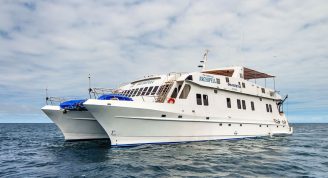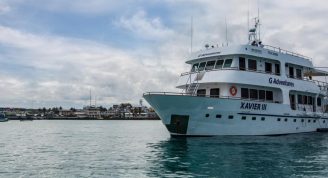Description
Our Galápagos photography trips offer a unique, uninterrupted 15-day circumnavigation with a focus on extensive exploration and rare phenomena. Guided by two expert naturalists and renowned photographer Tui deRoy, you’ll enjoy intimate and flexible experiences tailored to both keen photographers and their companions. Early morning and late afternoon excursions, a slow-paced itinerary, and two nights in Quito before embarkation ensure optimal conditions and a seamless start to your adventure.
Your Photography Tour Leader: Tui de Roy
Tui De Roy is a world-renowned, award-winning wildlife photographer and writer, as well as an acclaimed conservationist and founding fellow of the International League of Conservation Photographers.
Tui has lived in the Galapagos since the age of two, when her artist parents decided to leave their native Belgium to become pioneers in the little known archipelago in 1955. Home taught with a keen interest in nature, she became the first naturalist guide when tourism began to reach the islands in 1969, but soon turned to wildlife photography and writing as her lifelong profession.
Taking up residency in New Zealand in 1992, Tui travelled the world for 20 years, producing large format books on topics as varied as the world’s albatrosses and penguins, a natural history of the Andean mountain chain, and an ecosystem-based exploration of New Zealand.
After photographing on all seven continents, Tui has now returned full time to Galápagos where she is dedicating herself to re-photographing the wonders of these islands with a new eye, and spreading the word about their fragility and need for protection. Still, it’s impossible to keep her settled! Her most recent project is focusing on sea turtles of the world – capturing images of a wide range of sea turtles around the planet.
Tui’s work has been published in over 40 countries. She has authored 20 natural history books illustrated with her images, including a line of Galapagos guidebooks and recently released children’s books. In 2020 Princeton University Press will publish her landmark photographic anthology covering her 50 years of Galapagos photography.
Only very rarely does Tui lead a photo tour – this really is a once in a lifetime opportunity to experience the islands through her eyes!









